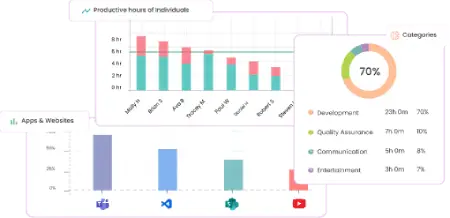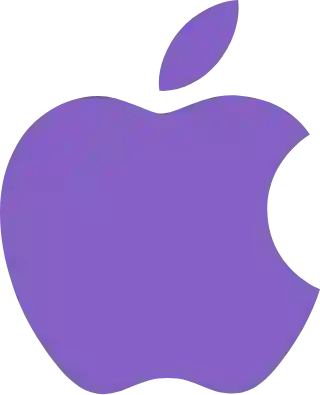Powerful & Popular
Time Tracking Software
Install, Observe, Enhance - Simple Success Strategy
- Timesheets
- Billing and Invoices
- Time Entry
- Offline Mode
- Reports & Analytics
- Mobile Time Entry
- Field Time Tracking
- Proof Of Work

Thank you! We have just sent you an OTP. Please confirm.
If you want to change your email, please click here

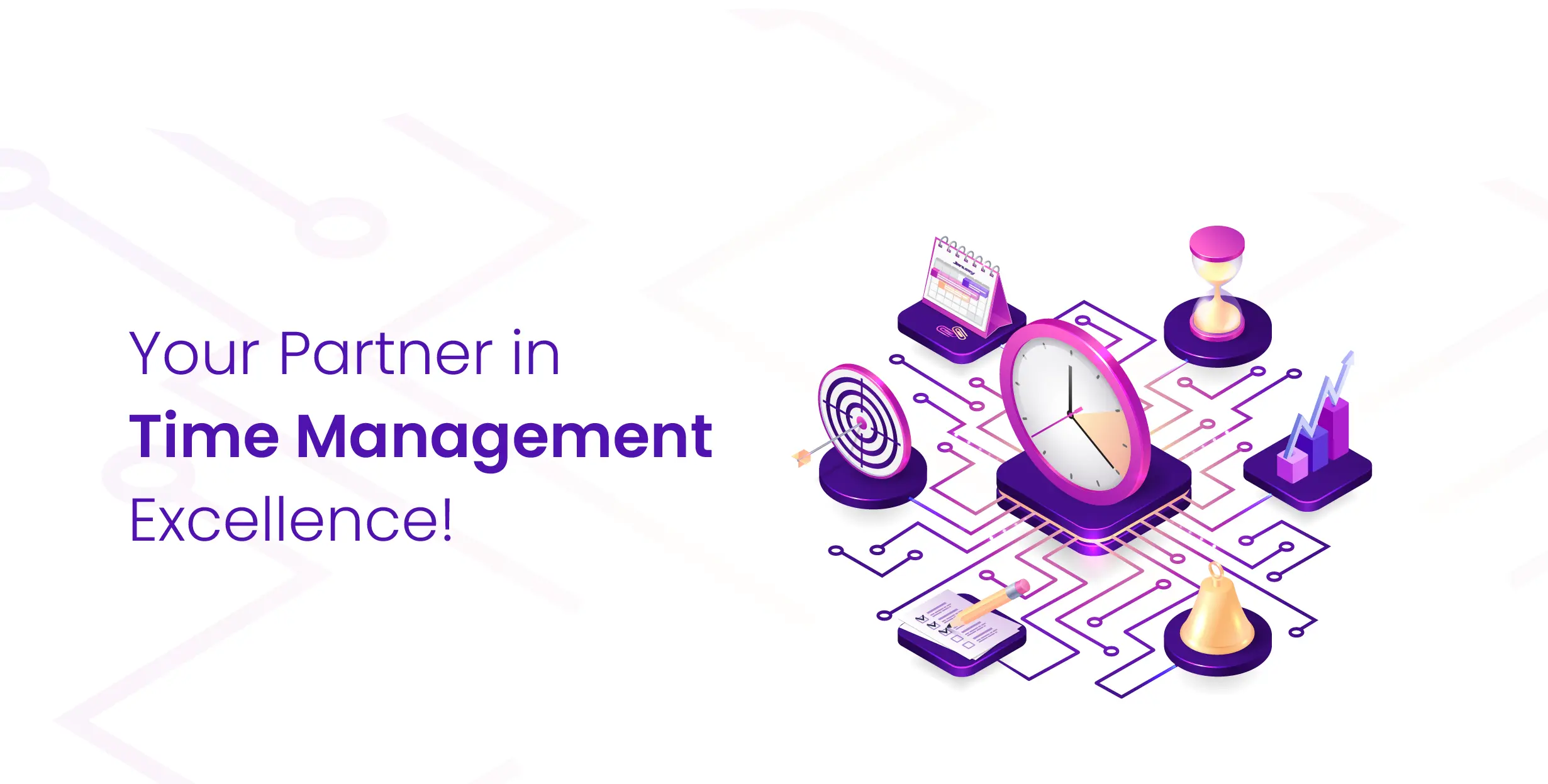
Every Single Minute, Across Every Industry
The only solution you will ever need for tracking time on projects and tasks, productivity,
and effectiveness, regardless of industry.
Automatic Timesheet
Get precise employee insights effortlessly. Use the best time- tracking software to automate tracking as employees log in, no manual work needed.
Employee Productivity
Uncover live productivity data, track total work hours, spot trends, remove distractions, boost focus, and enhance productivity
Automated Reports
Boost growth potential with data-driven certainty. Optimize productivity using precise time tracking, avoiding errors with accurate reports
Intelligent Alert
Ensure productivity and security by monitoring and receiving instant alerts on employee activities during work hours.
Project Time Management
Time Champ’s time tracker allows you to keep track of time, activities, productivity levels, budgets,
and everything else you need to help your team work more efficiently.
User Authentication
Secure your data with User Authentication. Keep your information safe and access granted only to authorized users. Stay protected.
Non-Productive Hours
Accurate non-productive hours data helps detect performance issues. Monitor inefficient employees’ office hours spent on irrelevant tasks
Role-Based Access
Empower your organization with granular control. Create custom roles and grant precisely the necessary features, ensuring optimal security and streamlined workflows. Stay in command with ease.
Why Time Tracking is Important
Time tracking is crucial because it provides a clear overview of how we spend our time. By analyzing our time allocation, we can identify time-consuming activities, eliminate distractions, and focus on high-value tasks. Moreover, time tracking helps us set realistic goals, prioritize effectively, and make informed decisions about resource allocation.
How Will Your Employees Use Time Champ’s Time Tracker
When your employees begin working on a new project or task, they will start the timer. When they are finished, they can change the status of the task, and you will see everything on your dashboard in real-time.
Application of Time Tracking Software
When your employees begin working on a new project or task, they will start the timer.When they are finished, they
can change the status of the task, and you will see everything on your dashboard in real-time.
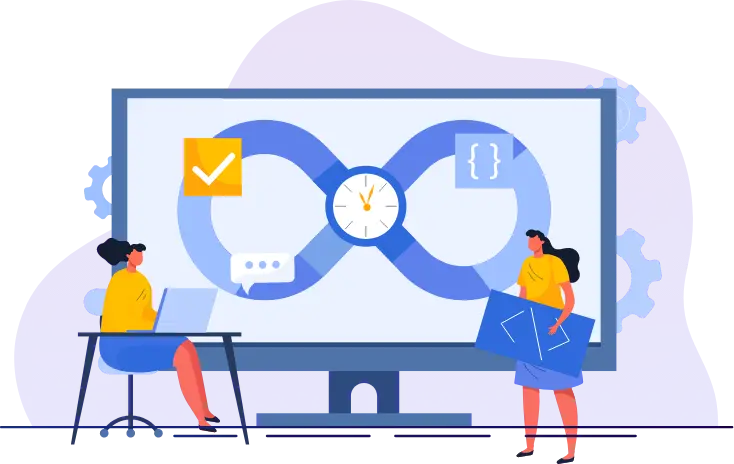


How Do You Want to Store Your Data Securely?
Cloud Computing Solution
The best option for teams looking for a quick, easy setup in a matter of minutes. There will be no complicated setup, additional technical equipment, or involvement from your IT team. Your data is securely stored on the industry-leading Google Cloud infrastructure using the most recent security standards
Own Your Data with our On-Premises Solution
Take control of your data with our On-Premises Solution. Ideal for teams needing full control, this custom option requires technical expertise and IT team collaboration. Safely store data on your own servers, ensuring protection and peace of mind.
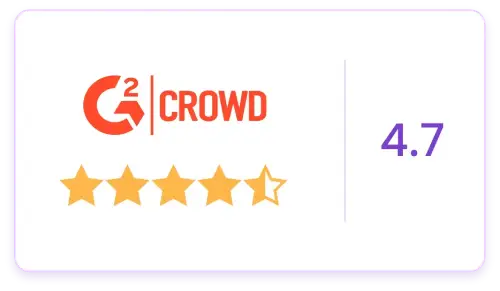
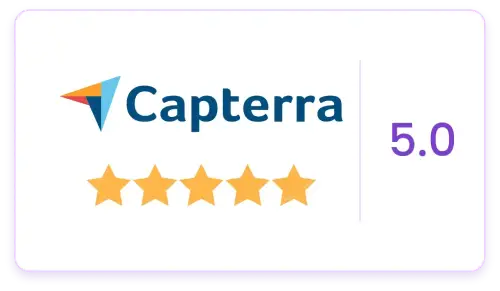
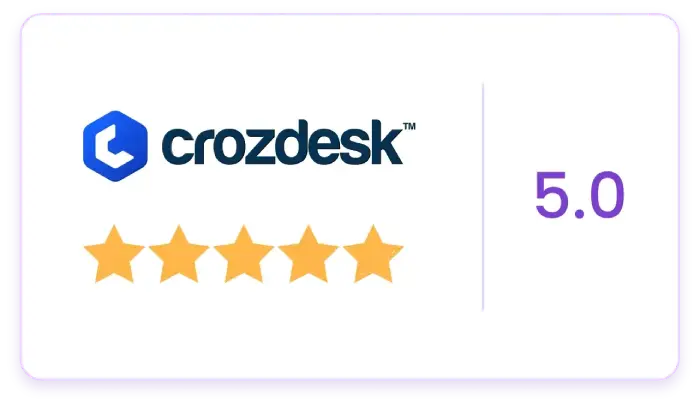
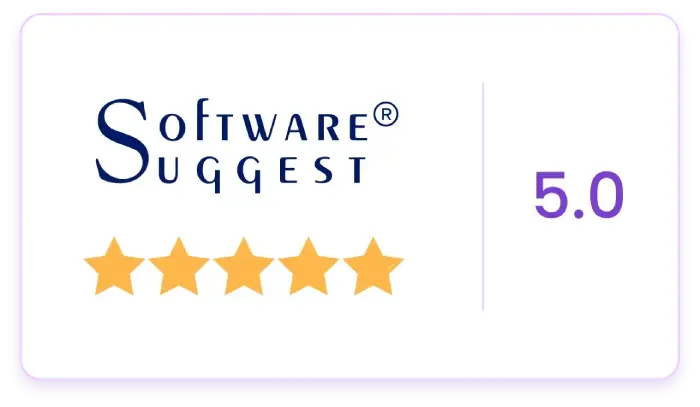
Time Tracking: Enhancing Productivity and Efficiency
Does every minute matter in your company? Then you belong to the millions of astute businesses that rely on time-tracking s oftware, which helps in measuring and recording working hours.
If you install the perfect time tracker like Time Champ, you can optimize workflows, analyze productivity trends, and manage projects & budget more effectively & accurately.
The best time trackers available today are automated through computer monitoring software, eliminating time-consuming manual work and making day-to-day processes more precise and transparent.
With employee tracking, workplaces become 24% more efficient, track time 60% more accurately, and can have potential savings of up to $10 million annually.
Guide Topics
What is Time Tracking?
Why Do Productive Companies Track Their Time?
How Time Tracking Revolutionises Business Operations?
What Is Your Time-Tracking Options?
How to Implement Time Tracking in Your Team?
Benefits of Time Tracking for Individuals
Benefits of Time Tracking for Businesses
Different Time Tracking Methods
Choosing the Right Time Tracking Solution
Tips for Effective Time Tracking
Overcoming Challenges in Time Tracking
Time Tracking Best Practices
Time Tracking and Work-Life Balance
What is Time Tracking ?
Time tracking is the process of monitoring and recording the time spent on various activities or tasks. It allows individuals and businesses to gain insights into how time is utilized, identify areas for improvement, and make informed decisions based on data-driven analysis. Time tracking pertains to how organizations document the working hours of their hourly employees and ensure precise remuneration for the time devoted. It constitutes a subset of time and attendance, a comprehensive term encompassing not only time tracking but also other facets such as attendance, time off, billable hours, and scheduling.
- Time entry
- Approvals
- Reporting
Originally, all these operations were performed manually. However, nowadays, they are frequently managed through time tracking software specifically for this purpose. Nonetheless, there are still establishments that engage in manual time tracking, either partially or entirely. Time entry involves the day-to-day procedure of employers recording their employees’ commencement and cessation times, in addition to any breaks not covered by the employees’ contractual agreements. These time intervals are referred to as timestamps and may be documented on a physical medium like a timecard or through an electronic means such as a spreadsheet or time-tracking software. Time entry is often denoted as “clocking in and out” or “punching in and out,” the latter term alluding to the act of pressing a button on a physical time clock that imprints the time on a paper timecard.
In modern software-based
systems, a unique
identifier is employed to log an employee’s clock-in and clock-out
instances.
Time-tracking functionalities integrated into point-of-sale systems
frequently rely on
an employee’s initial login and end-of-day log-out to perform time entry
and grant
system access. In both electronic and manual systems, the recorded times
of the day are
termed timestamps, and an employee’s timestamps are logged in a
timesheet. Approvals
play a crucial role in ensuring accuracy and compliance in remuneration.
Typically, a
manager examines employees’ timesheets for the designated pay period to
verify their
accuracy, following which HR or the software calculates the total hours
worked,
including any overtime hours.
All forms of time tracking
involve
reporting, submitting approved and verified payroll processing hours. T
ime-tracking
reports also offer strategic advantages, as they can aid organizations
in conducting
budget analysis or detecting disparities in compensation.
Why Do Productive Companies Track Their Time?
According to research, workers spend an average of 2 hours and 53 minutes working during an eight-hour workday.That is a lot of squandered time and productivity.
Worst of all, it costs businesses $544 billion in wasted time each year. Any manager, founder, or executive understands the value of maximizing every minute of work time.
However, putting this into practice in today’s fast-paced, increasingly remote digital workplaces is an entirely different story. How do you… in today’s modern working world? Explain the distinction between productive and unproductive time. Determine your most productive employees. Keep track of time and attendance (especially if your team is dispersed across multiple cities). Distinguish between time spent on tasks and time spent on social media.
How Time Tracking Revolutionises Business Operations?
Numerous factors contribute to the success of a business, such as the quality of employees, established systems, management techniques, and incentive structures. However, one aspect stands out as the most influential: time management. The way time is utilized can have a profound impact on every facet of your business, including employee productivity, project planning and completion, wage calculation, and overall financial performance.
Therefore, it is fair to assert that the adoption of a work time tracker can completely transform the way you conduct your business operations. How exactly does it achieve this? Read on to explore the remarkable benefits.
Optimizing Workflow, Processes & Progress When projects exceed budgets or stretch beyond expected timelines, a worktime tracker becomes invaluable. It allows you to analyze the collected time data, enabling you to pinpoint precisely what went wrong. Through this analysis, you can identify common causes such as inadequate staffing, excessive staffing, mismatched personnel, bottlenecks, and inefficient workflow management.
Building the Ideal Team Size Imagine allocating a budget of 200 hours (about 1 week 1 and a half days) for a project based on the assumption that five staff members will work eight hours a day for a week. At the end of the week, the project is completed. On the surface, the budget was accurate. However, a thorough examination of the time tracking data reveals that the staff members only averaged five hours of active time to complete the job. This indicates that the project required only 125 hours (about 5 days) and could have been accomplished by a team of three employees. The remaining two individuals could have been assigned elsewhere or not hired at all for freelancers. This valuable insight would have been inaccessible without the implementation of a work time tracker.
Ensuring Time Allocation Accuracy for Projects In today’s multitasking work environments, it is common for time to be divided among various projects. While this can increase productivity and expand the range of projects undertaken, it also raises the risk of errors in time allocation.
Confidently Hiring Freelancers and Remote Workers Incorporating freelance and remote workers into your team offers several advantages, such as cost reduction, increased talent pool, and lower headcount. However, when these workers are geographically dispersed, maintaining visibility over their time and attendance becomes challenging.
Time Champ, an online time-tracking software, and employee monitoring solution, bridges the gap between you and remote or freelance workers. By installing Time Champ on their systems, you can track their time based on computer activity logging, capture screenshots as proof of work, and monitor their activity levels, application usage, and website visits. This comprehensive monitoring makes it feel as though they are working right along side you in the office.
Boosting Focus, Efficiency, and Productivity Focus, efficiency, and productivity serve as the fundamental pillars of high-performing teams. If you seek ways to enhance productivity, employing a powerful work tracker like Time Champ becomes essential. It allows you to monitor employee time spent on tasks, applications, and websites, ensuring they stay focused on their designated work. By comparing data from previous periods and projects, you can gain valuable insights into your team’s productivity and make necessary adjustments and task prioritization.
Furthermore, a productivity tracker not only helps identify the most efficient workers, providing them with the recognition they deserve, but also enables you to assign them to high ROI (return on investment) projects and top-priority tasks. This multiplication of their impact on team productivity and performance further solidifies Time Champ’s role as not just a work time tracker but also as employee monitoring software that enhances focus by monitoring the specific tasks, applications, and websites your team spends time on.
Improving Attendance, Reducing Absenteeism, and Optimizing Overtime It is quite common for employees to take a few extra minutes here and there by arriving late, leaving early, or taking extended breaks. While this may seem in consequential to them, it results in significant costs for businesses, with an estimated annual bill of $3 billion due to tardiness.
While it is impossible to individually monitor all employee’s comings and goings, a work time tracker provides a solution. It enables you to keep an eye on employees who consistently arrive late, take extended breaks, or are absent. Additionally, an employee attendance tracker calculates working hours, overtime, and leave balances accurately, facilitating effortless time-off and leave management.
Enhancing Accuracy in Project Budgeting, Estimation, and Billing by the hour often proves to be an imprecise process, especially for projects that span several months and involve team members from various divisions. It is common for companies, such as agencies, architects, and design firms, to estimate and budget for a specific number of hours, only to witness project durations expanding beyond expectations. This leaves businesses with two unfavorable options: engaging in difficult conversations with unhappy clients or shouldering the additional time and costs themselves.
Implementing an effective employee time tracking system offers a solution by making budgeting, estimation, and billing more accurate. You can avoid underbilling, track progress against estimated time, and adjust costs when clients request additional work, providing them with evidence of time spent and the corresponding additional fees. Moreover, you can utilize data from similar past projects to provide more precise quotes in the future. Some staff tracking solutions, such as Time Champ, even allow you to link tracked time to payroll, ensuring accurate and automated staff wage calculations, or creating one-click client invoices.
As demonstrated, time tracking offers advantages that span every aspect of business operations. In simple terms, a time-tracking application empowers you to allocate most of your time to activities that generate the most revenue, eliminating time-consuming tasks that yield minimal returns. By redirecting your focus to projects with the highest ROI, you can maximize your business’s potential.
What Is Your Time-Tracking Options?
When it comes to tracking time, there exists a variety of methods that differ in complexity, precision, and efficiency. Before deciding on the most suitable time-tracking solution for your needs, it is essential to be aware of the available options, some of which you may have previously utilized. Let us delve into these alternatives now.
- The ‘Approximation’ Approach :
This method can be likened to gauging the wind’s direction by raising your thumb in the air. It often involves surveying team members either before or after a project, asking questions like “How long do you estimate this will take?” or “How many hours did Project X consume, folks?”
- Is It Recommended?
Well, it can serve its purpose if you simply wish to swiftly complete tasks, your clients are not too inquisitive, and you lack any other established system. However, overall, it proves to be an unsustainable and imprecise technique that will inevitably lead to complications.
- Recording Hours Manually as You
Progress :
This method of tracking employee hours exhibits a slightly higher level of sophistication. Emphasis should be placed on the word ‘slightly.’ Whether you employ a trusty notebook, a note-taking application, time logs, or your smartphone, this approach entails manually tallying hours as you proceed. When it is time to bill, refer to your ledger.
- Is It Recommended?
Again, this approach can be workable. That is, if you are operating at a low level, not overly concerned with optimizing your team, and your clients are easygoing. However, it still allows room for error, inaccuracy, and potential questioning.
- Spreadsheet Usage :
Now we venture into the realm of moderate technical proficiency. Utilizing a spreadsheet template as a timesheet time tracker can be as simple as naming a few columns and inputting hours as you go. Alternatively, it can be more sophisticated with formulas that enable automated calculations and analysis of the time worked. Furthermore, if you employ a platform like Google Sheets or AirTable, it enhances collaboration, conclusiveness, and document security.
- Is It Recommended?
Numerous companies and employees who track time on an hourly basis manage quite well using spreadsheets as their work trackers. However, this method still demands considerable manual effort, and regular maintenance, remains susceptible to inaccuracies, and may not fulfill the precise evidence of work that certain employers and clients require.
- Time Tracking Software or App :
Now we enter the realm of contemporary employee time-tracking software. It is worth noting that there exists a spectrum of sophistication within the domain of time-tracking software. You can opt for one of the basic free time tracking applications available in the market or automate the process with a comprehensive time monitoring app such as Insightful. The Insightful Time Tracker, for instance, presents a comprehensive solution where tasks are assigned to employees, and they can initiate and conclude the tracking process with a single click.
- Is It Recommended?
For example, let us consider Mike from your design team. He might be simultaneously working on a quick brochure design and an extensive multi-page website project, both of which are displayed side-by-side on his work tracker. Mike diligently devotes hours to the website design, completes the task, and submits his work, only to realize that he had allocated all the time to the quick brochure task. So, is it a significant improvement? Yes. Foolproof? Not entirely (sorry, Mike).
- Automated Time Tracking (also known as
Smart Time Tracking):
When your livelihood revolves around time, there is nothing more disheartening than forgetting to track time on a project or spending a substantial portion of your day solely on time tracking instead of productive work. With Automated Time Tracking, these issues have become outdated. Unlike regular work trackers that necessitate manual start and stop actions from employees, a Smart Time Tracker like Insightful captures all the work performed and utilizes AI (Artificial Intelligence)and machine learning to categorize and allocate the time to the appropriate projects, eliminating the need for manualintervention.Automated time tracking represents the latest generation of intelligent time tracking, akin to the transformation from fax to email, typewriter to computer, and landline to cell phone.
- Is It Recommended?
Simply put, automated time tracking signifies the forefront of time monitoring. It encompasses all the advantages, data, and insights derived from standard time tracking while reducing administrative burdens and manual labor.For companies in their initial stages or those already employing a time monitoring app, Smart Time Tracking, such as Insightful, truly represents the optimal choice for time monitoring. It adds additional layers of tracking accuracy, efficiency, and simplicity. Moreover, by eliminating the tedious and unproductive administrative tasks associated with time tracking, employees can maintain their focus on their primary work, whether it involves designing, creating, or other essential activities.This is particularly crucial since employees typically require 23 minutes and 15 seconds to regain concentration after encountering simple daily distractions like administrative tasks.
- Project Management Time Tracking
Software :
If you belong to a project-based team utilizing software like Asana, Trello, or JIRA, tracking time spent on individual tasks becomes a seamless process. This can be achieved through clever task time tracker integrations with popular project management systems, which automatically detect, and record time based on task status and progress. It is worth mentioning that certain time management apps incorporate project management capabilities, thus eliminating the need for two separate platforms.This integration introduces a new level of accuracy to time-tracking projects. For example, let us assume you have been billing clients three hours per week for website fixes, only to discover that your development team spends six hours on this task. his realization may prompt you to adjust your billing rates accordingly. Alternatively, you may find that your staff dedicates 12 hours weekly to managing the support team, which could be optimized through the implementation of improved standard operating procedures, thus conserving valuable human resources.
- Is It Recommended?
Quite simply, if you already employ a project management system, it makes perfect sense to integrate it with time recording software such as Insightful, which offers an easily accessible API (Application Programming Interfaces) and ready-to-use integrations. By automatically tracking time-based on task and project completion, you will gain valuable new insights into task and project durations, enabling you to optimize your workflow, allocate staff resources more effectively, and streamline your billing processes. Moreover, it eliminates one layer of administrative tasks from your operations.
How to Implement Time Tracking in Your Team?
When it comes to generating written content, two crucial factors to consider are “perplexity” and “burstiness.” Perplexity measures the complexity of the text, while burstiness assesses the diversity of sentences. Typically, human writers demonstrate higher burstiness by incorporating both short and long sentences. Conversely, AI-generated sentences often exhibit uniform length. To ensure the content I generate for you has the desired level of perplexity and burstiness, I will consider these factors.
Effective implementation of time tracking can significantly impact productivity and performance. However, achieving desirable outcomes with a time-tracking solution like Insightful requires meticulous execution. Any missteps along the way may result in wasted time rather than time-saving benefits.
While business owners, executives, and managers readily recognize the advantages of time tracking, it may not be immediately apparent to everyone. Employees might view it as a burden, conjuring images of manually jotting down every hour or using archaic clock-card systems. Moreover, even certain middle or lower-level managers may fail to grasp its benefits, perceiving it as an interruption to workflow.
To seamlessly incorporate time and attendance software into your business operations, consider the following straightforward steps:
- Articulate Your Objectives: Human nature tends to resist change, particularly in the workplace. Employees may perceive time tracking as incessant scrutiny or micromanagement. Therefore, making your intentions behind implementing a job time tracker clear becomes the foremost priority. By effectively communicating the goals driving the introduction of time tracking, you can alleviate employees’ concerns. Whether the aims involve optimizing team workflow and performance, attaining greater time utilization, enhancing billing accuracy, or improving invoicing processes, ensure you convey these motivations to your workforce.
- Highlight the Personal Benefits: As an employer or business owner, you may understand the benefits you will derive from monitoring software. However, it is crucial to elucidate the advantages to your employees, as they may remain skeptical. A simple approach is to demonstrate how time tracking can personally benefit them. For instance, employees using Insightful, a monitoring tool adopted by numerous companies, experience:
- Accurate compensation for time worked, including overtime, facilitated by automated payroll systems.
- Enhanced recognition and rewards for exceptional performance, as their true contributions to the team are acknowledged.
- Becoming part of a highly efficient, high-performing team that ensures a fair distribution of work.
- Increased productivity, allowing for greater task completion and alleviating the burden of excessive workload.
- Elimination of the laborious task of manual time recording and weekly reporting.
- Improved organization and project/task management capabilities.
-
Greater freedom to work remotely on their own terms, as managers
can now track their progress from anywhere.
Simplify the Adoption Process Undoubtedly, the easier it is for your employees to embrace an employee time clock app, the more effective its implementation will be. Several factors contribute to a smooth introduction of time-tracking software:
- Select a user-friendly time tracker that can be downloaded and installed effortlessly, ensuring minimal onboarding requirements for your team.
- Provide clear instructions and guidelines on how to utilize the time recording software effectively. Opting for a solution that incorporates automation and smart features reduces the need for extensive guidance.
- For larger teams, consider initiating a pilot program within your organization to iron out any learning curves and optimize usage procedures.
- Explore ways to incentivize and motivate your team to adopt time tracking. This could involve explaining the personal benefits or implementing a reward and recognition program tied to the usage of your time- tracking software.
Benefits of Time Tracking for Individuals:
-
Enhancing Productivity:
Time tracking enables individuals to become more aware of how they spend their time. By tracking activities and analyzing the data, they can identify patterns, eliminate time-wasting habits, and focus on tasks that truly matter. This heightened productivity leads to a greater sense of accomplishment and satisfaction.
-
Improving Time Management:
With the help of time tracking, individuals can prioritize their tasks effectively. By setting realistic goals, breaking them down into manageable chunks, and allocating time accordingly, they can avoid procrastination and stay on track. This ensures that deadlines are met, and projects are completed in a timely manner.
-
Identifying Time-Wasting Activities:
Time tracking reveals hidden time sinks that may go unnoticed otherwise. It helps individuals identify activities that consume excessive time without providing significant value. By eliminating or minimizing such activities, individuals can reclaim valuable time and redirect it towards more meaningful pursuits.
-
Achieving Work-Life Balance:
Time tracking assists individuals in achieving a healthy work-life balance. By gaining insights into how they allocate time to work, personal activities, and leisure, individuals can make conscious decisions to create a harmonious equilibrium. This leads to reduced stress, increased well-being, and better overall quality of life.
Benefits of Time Tracking for Businesses:
-
Project Management and Planning:
For businesses, time tracking plays a vital role in project management and planning. By accurately tracking the time spent on various project tasks, teams can evaluate progress, identify bottlenecks, and make necessary adjustments to ensure timely project completion. This facilitates effective resource allocation and enhances overall project efficiency.
-
Resource Allocation and Budgeting:
Time tracking provides businesses with valuable data to allocate resources effectively. By understanding how time is spent across different projects or departments, organizations can make informed decisions about resource distribution. This helps in optimizing workforce productivity, minimizing resource wastage, and staying within budgetary constraints.
-
Employee Productivity and
Accountability:
By implementing time tracking systems, businesses can promote a culture of productivity and accountability among employees. Tracking time spent on individual tasks encourages focus, minimizes distractions, and fosters a sense of responsibility towards meeting deadlines. It also provides management with data to evaluate employee performance objectively.
-
Client Billing and Invoicing:
Time tracking simplifies the billing and invoicing process for businesses that charge clients based on hours worked. Accurate time tracking enables precise billing, reduces disputes, and enhances transparency in client relationships. It ensures that businesses are adequately compensated for the value they provide.
Different Time Tracking Methods:
-
Manual Time Tracking:
Manual time tracking involves recording time manually using tools such as spreadsheets, journals, or dedicated time tracking apps. This method provides flexibility and is suitable for individuals who prefer a hands-on approach. However, it requires discipline and may be prone to errors or inconsistencies.
-
Digital Time Tracking Tools:
Digital time tracking tools offer a convenient way to track time using software applications or web-based platforms. These tools provide features such as task timers, activity categorization, and reporting capabilities. They offer automation and integration with other productivity tools, making them suitable for both individuals and businesses.
-
Automatic Time Tracking:
Automatic time tracking relies on software applications that monitor and record time automatically in the background. These tools track active windows, app usage, or device activity to provide a comprehensive picture of time spent. Automatic time tracking is less intrusive and offers accurate data, but it may raise privacy concerns for some individuals.
Choosing the Right Time Tracking Solution :
-
Assessing Individual or Business
Needs:
Evaluate the specific requirements for time tracking. Consider factors such as the number of users, desired level of automation, integration with existing systems, and reporting capabilities.
-
Considering Features and
Functionality:
Look for features that align with your goals. These may include task categorization, project tracking, reporting and analytics, mobile access, collaboration features, and integration with other tools like project management or invoicing software.
-
Evaluating Cost and Scalability:
Consider the pricing models offered by different time tracking solutions. Assess whether the costs align with your budget and whether the solution can scale as your needs evolve.
-
Reading User Reviews and
Recommendations:
Research user reviews and testimonials to gain insights into the experiences of others. Consider factors such as ease of use, reliability, customer support, and overall satisfaction.
Tips for Effective Time Tracking :
-
Setting Clear Goals and Priorities:
Establish clear goals and priorities for your work or personal activities. Define what you want to achieve and allocate time accordingly. This clarity helps in staying focused and avoiding time spent on less important tasks.
-
Creating a Structured Schedule:
Develop a structured schedule that outlines specific time slots for various activities. Allocate dedicated time for important tasks, breaks, and leisure activities. Stick to the schedule as much as possible but allow flexibility for unexpected events or adjustments.
-
Minimizing Distractions:
Identify and minimize distractions that can derail your focus. This may involve silencing notifications, setting boundaries with colleagues or family members, and creating a conducive work environment. By minimizing distractions, you can maintain productivity and make efficient use of your time.
-
Reviewing and Analyzing Tracked Data:
Regularly review the data collected through time tracking. Analyze the patterns, identify areas of improvement, and make necessary adjustments to your time management strategies. This continuous feedback loop helps refine your approach and maximize productivity.
-
Adjusting and Optimizing Time Management
Strategies:
Time tracking provides insights into what works and what does not. Use the data to experiment with different approaches, techniques, or tools. Adapt your time management strategies based on the results to find the most effective methods for your specific needs.
Overcoming Challenges in Time Tracking :
Implementing time tracking may come with certain challenges. Here are some common hurdles and how to overcome them:
-
Resistance to Change:
Some individuals may resist adopting time tracking due to concerns about intrusive monitoring or the perception of added administrative burden. Address this by highlighting the benefits and explaining how time tracking can empower individuals to take control of their time and achieve their goals.
-
Finding a Balance Between Tracking and
Working:
Time tracking should not hinder productivity. It is essential to balance tracking time and getting work done. Avoid spending excessive time on tracking itself or becoming overly fixated on meeting time targets at the expense of quality.
-
Addressing Privacy Concerns:
For those worried about privacy, it is crucial to choose time tracking tools or methods that prioritize data security. Look for reputable providers that offer robust privacy measures and transparent policies. Communicate the measures taken to protect personal or sensitive information.
Time Tracking Best Practices :
To make the most of time tracking, consider these best practices:
-
Setting Realistic Time Estimates:
When assigning time estimates to tasks, be realistic and consider potential delays or unforeseen circumstances. Overestimating or underestimating can lead to inaccurate planning and affect overall productivity.
-
Tracking Time Accurately and
Consistently:
Ensure that time tracking is done accurately and consistently. Develop a habit of logging time promptly and categorizing activities correctly. This ensures the data collected is reliable and useful for analysis.
-
Using Time Tracking as a Learning
Tool:
View time tracking as a learning tool rather than just a tracking mechanism. Reflect on the data collected, identify trends, and analyze productivity patterns. Use this knowledge to refine your approach, eliminate time-wasting habits, and improve efficiency.
-
Integrating Time Tracking with Other
Productivity
Tools:
Consider integrating time tracking with other productivity tools. This synergy can enhance your overall workflow, providing a comprehensive approach to managing tasks and optimizing productivity.










